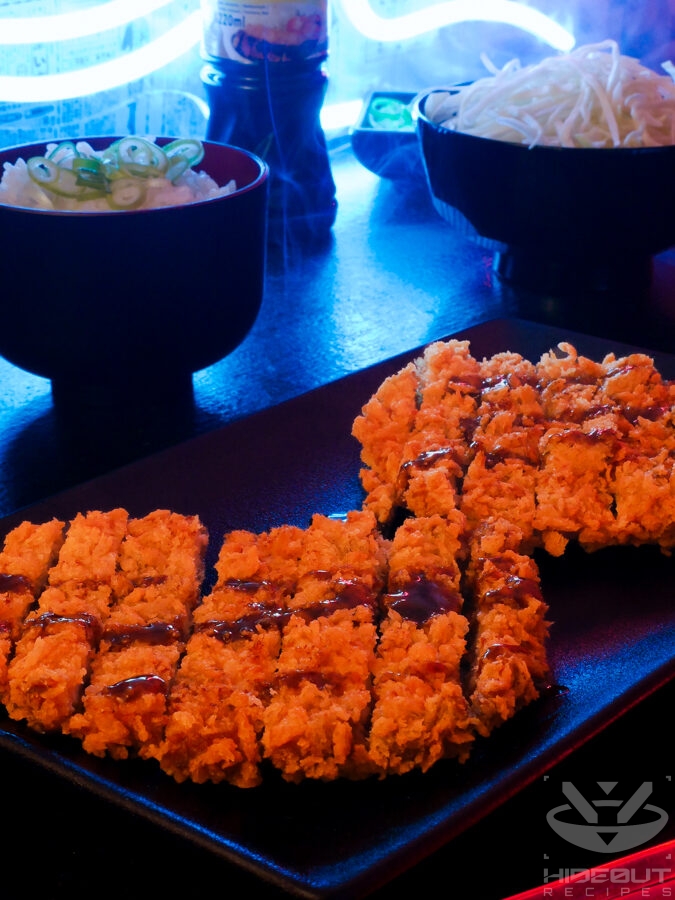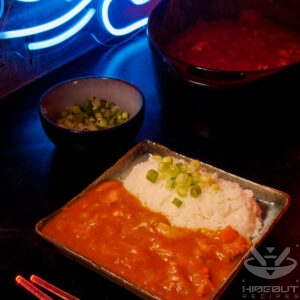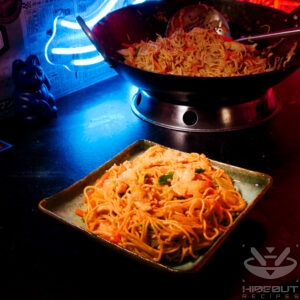Breaded in panko and double deep fried, these pork cuts will come out incredibly crispy as long as you are diligent about timing, temperatures, and keeping them dry once outside the oil. Make them as a snack or part of a larger menu, or just fry up a large batch for a standalone dinner.

Pork me, chef!
A Patron ordering the fifth tonkatsu of the night
Some like it thick
I’ve seen extremely thick and extremely thin cuts of meat for Tonkatsu. My recipe is on the very thin end; 70% of it is crust, and it’s not very juicy (but not dry either). If you like it thicker, increase the deep-frying time (of the first go-around). Whatever thickness you go with, make sure to get the leanest cut you can, as any marbling will come out chewy.
The default recipe amount is for about five thin cutlets, which sounds like a lot for two people. It can be enough for three (when eaten with rice and cabbage), but good Tonkatsu is so addictive, you’ll be surprised how much you can eat in one sitting.
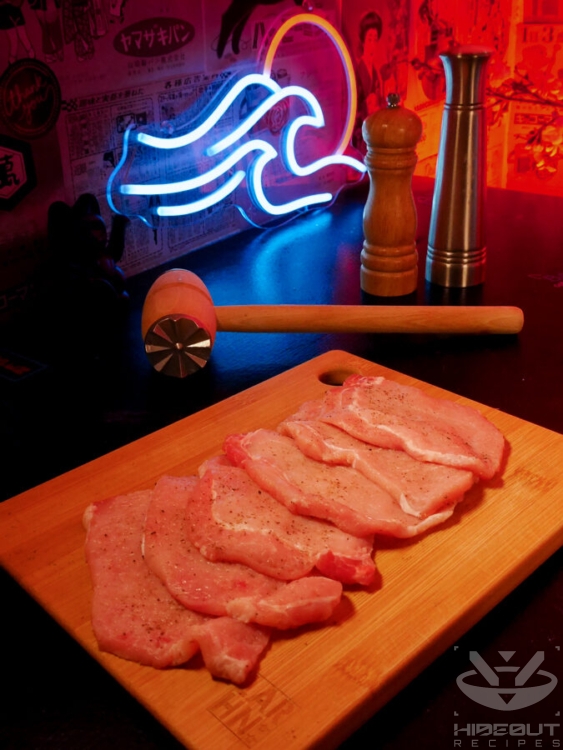
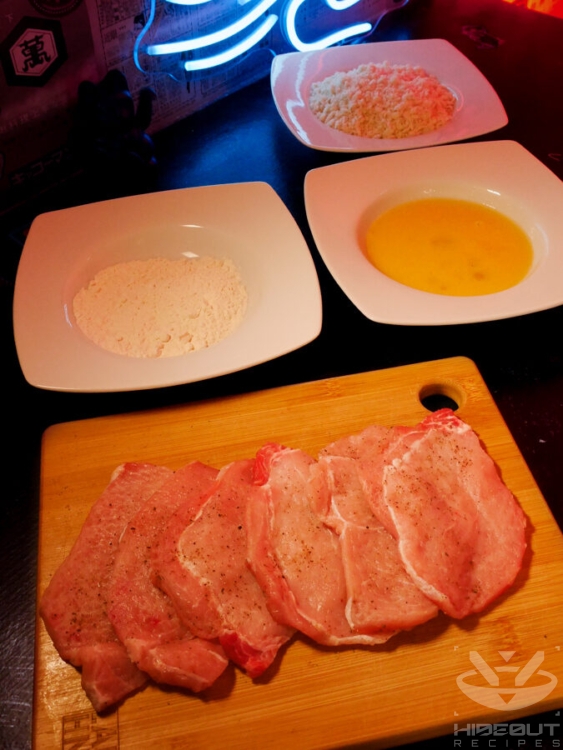
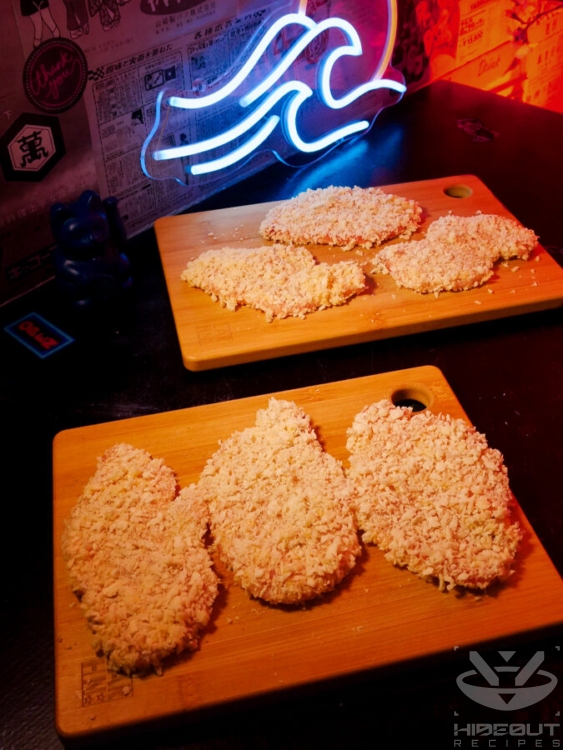
Eliminate the guesswork
When it comes to deep-frying, I like to use a cast-iron pot because it retains the temperature well. The thermometer is not optional here; measure thoroughly and frequently to make sure the indicated temperatures are retained as closely as possible at all times. This will occasionally require some waiting around for it to rise (or drop) again, but it is crucial if you want to obtain the optimal result.
My go-to for the oil is a block of vegetable fat that is firm at room temperature, but you can use any neutral oil with a high smoke point. Whatever you go with, as soon as you remove a cutlet from the pot, the oil is your enemy. Keep the cutlets as dry as possible between and after rounds of frying to keep them from getting soggy. Whenever I make a batch of Tonkatsu, I use up half a roll of paper towels for storing and patting.
The purpose of the second round of frying is to maximize crispiness. It’s not easy to tell in the dim lights of the hideout, but the Tonkatsu comes out a few shades darker between the first and second fry:
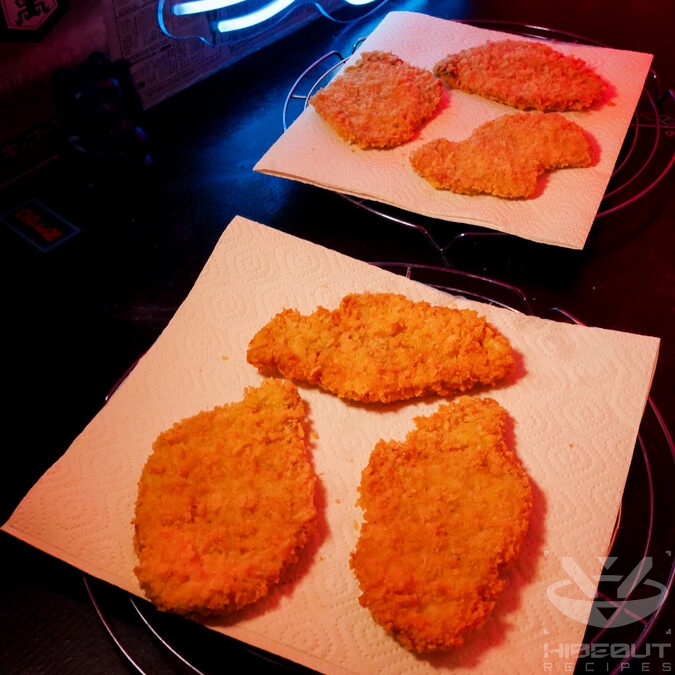
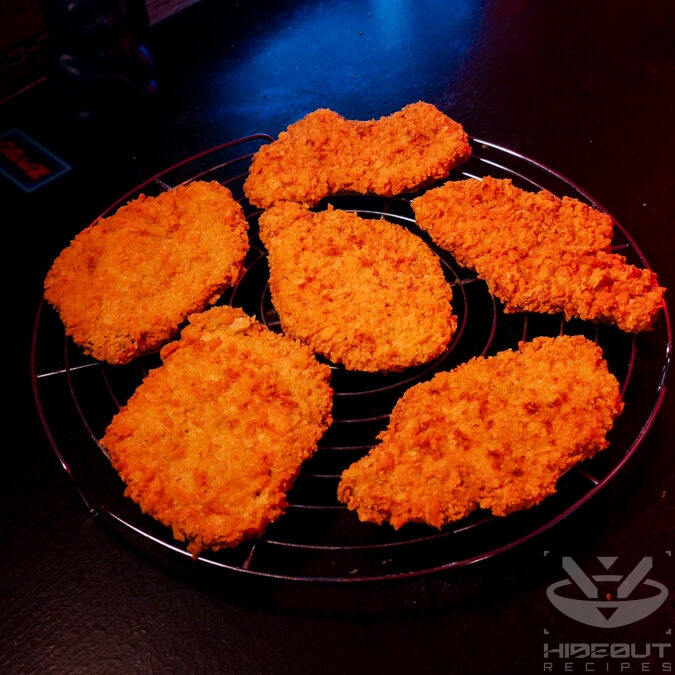
About the sides
Deep-fried Japanese food is often served with thinly sliced cabbage. In a specialized Tonkatsu restaurant in Japan, the cabbage is thin as a thread of fabric. This can only be achieved with a sharp knife and the skills to go along with it. A mandolin cutter can also produce decent results in a short amount of time. Maybe I’ll go into detail about this one day. In the meantime, just check out this demo video and pay attention to how the exact part of the cabbage used, how thick it is, and its orientation on the slicer.
I recommend having one or two sauces to compliment the crispy and somewhat dry pork, either to dip in or to drizzle over. Some other recipes call for homemade dips, but store-bought Tonkatsu sauce is honestly great. I also like to add sesame sauce, but if you prefer kewpie mayo, sriracha, or anything else really, knock yourself out.
Recipe credit
Like most of my recipes, I started this one out by basing it largely on an existing one, specifically the Tonkatsu recipe by Just One Cookbook , who also have a Japanese Sesame Dressing recipe to go along with it. I’ve since practiced it many times, made changes to the ingredients and steps (sometimes very few, sometimes many), and written up as much additional advice as I could based on my own experience.
Tonkatsu
Equipment
- 1 Meat tenderizer
- 1 Thermometer for measuring oil temperature
- 1 fine-mesh strainer
- 1 spray bottle for moistening the panko; optional
- 1 Mandolin cutter if you're adding fresh cabbage; optional, but useful
Ingredients
For the meat
- 400 g pork loin cutlets 3-5 pieces, each ~1cm thick, as lean as possible
- 0.5 tsp table salt
- 0.5 tsp black pepper freshly ground
- 1 block oil for deep-frying
For the breading
- 4 tbsp all-purpose flour
- 2 large eggs
- 1 tbsp neutral oil
- 130 g panko
Sides
- 1 cup Japanese short-grain rice dry
- 0.25 head green cabbage if desired
- some tonkatsu sauce store-bought; okonomi sauce also works
- some sesame sauce (or any other dipping sauce) store-bought; optional
- 1-2 stalks green onion for garnish; optional
Instructions
Preparation
- If you would like to add cabbage to the dish, slice it into thin strips. It is highly recommended to use a mandolin slicer using the finest setting.
- Wash the rice and pop it into the rice cooker. Start it when beginning the deep-frying process.
- Thinly slice the spring onion and set aside for serving at the end.
- If you want, moisten the panko with some water now and let it rest for 15 minutes. This will help make the end result crispier. You can use a spray bottle for this, or just moisten your fingers and massage the water in.
Prepare the pork
- Cut off any edges of white fat on the pork. They would get quite chewy when deep-fried.
- Pound the cutlets with a tenderizer on both sides, then mold them back to their original shapes using your hands.
- Season the cutlets with the salt and pepper on both sides. Set aside.
Bread the pork
- Crack the eggs into a deep plate and whisk together with the oil until well mixed.
- Prepare another deep dish with the flour, and a third one with the (moistened) panko.Repeat the following steps with each individual cutlet.
- Dredge the cutlet in the flour on both sides and shake off any excess.
- Next, dip the cutlet into the egg until it's completely covered.
- Finally, press the pork gently in the panko from both sides. Gently shake off any excess.
- Set aside until all cutlets are breaded. Make sure they all rest for at least 5 minutes before deep-frying, as the breading will stick better that way.
Deep-fry
- Repeat the following steps for each individual cutlet.
- Add the oil to a pot and bring it to 170ºC over medium heat. Make sure it is back up to this temperature every time before adding a new cutlet.
- Gently put the cutlet into the oil and deep-fry for 2 minutes. Don't touch it in the first 30 seconds to prevent damaging the breading.
- Take out the pork and remove excess oil by holding it vertically over the pot for a few seconds while the oil drips off.
- Place it on a wire rack lined with paper towels. I like to gently press down on it with an additional paper towel to dry off as much oil as possible.
- Discard any fried crumbs in the oil with a fine-mesh strainer.
Double-fry!
- If you want, turn your oven to around 80°C to then put the final deep-fried cutlets inside to keep them warm.
- Individually deep-fry the cutlets again, this time for 1 minute each, at 180°C.
- Make sure the temperature is back up between each one, and to discard any crumbs just like before.
Serve
- Take the desired amount of cutlets for serving and cut them into 2cm wide slices. (Leave the rest in the oven to keep them warm for seconds.)
- Place the sliced cabbage on the plate and arrange the cut pork on top.
- Serve with rice and sauces, sprinkle with green onion.
